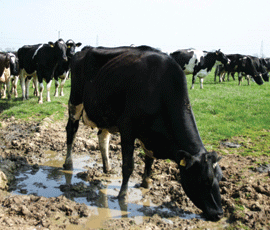Farms in North at high risk of fluke infection

Livestock producers in Scotland and the north of England could be exposed to an extreme high risk of fluke infection this autumn thanks to wet and warm weather creating an ideal environment for the parasite.
Novartis vet adviser Saul Harvey reported a 40% cattle liver condemnation rate on one day at Dunbia’s Preston abattoir in September – a figure that reflects the favourable fluke conditions in this area of the country.
This figure compares to an overall average 20% condemnation rate reported by the Meat Hygiene Service in December last year.
Independent sheep consultant Lesley Stubbings said 40% liver condemnation could be a common figure in the North this year, with Wales and western England still forecast to be at risk of a high prevalence of disease, according to NADIS.
“Fluke incidence will be very variable across the UK. Those dry parts of the country will be at much lower risk, compared to northern England and Scotland,” said Ms Stubbings.
“Ask yourself if you are in a traditional fluke area and what rainfall has been like, particularly in July, when the metacercaria is shed from the snail and can be ingested by livestock.”
SAC vet George Mitchell reported outbreaks of acute liver fluke in sheep, which had lead to death, in Ayrshire. “It is essential sheep and cattle perceived at risk in these areas are treated. But farmers across Scotland should remain vigilant.” Any casualty animals should be submitted to SAC Vet Centres for post-mortem to establish cause of death and permit continued monitoring of the disease.
Those producers who know they are in a fluke area should treat now with a flukicide, such as triclabendazole, that is effective against immature fluke, advised Ms Stubbings. However, she warned that effective administration according to weight was crucial to prevent resistance.
When treating now and putting cattle back out to pasture, producers should also be aware another treatment will be needed after housing. For example, closantel can be given three weeks after housing to kill fluke down to three weeks of age.
Ms Stubbings also said: “When treating for fluke, don’t throw a two-in-one or four-in-one treatment at stock unless you need to – it’s a waste of money and could encourage resistance.”
